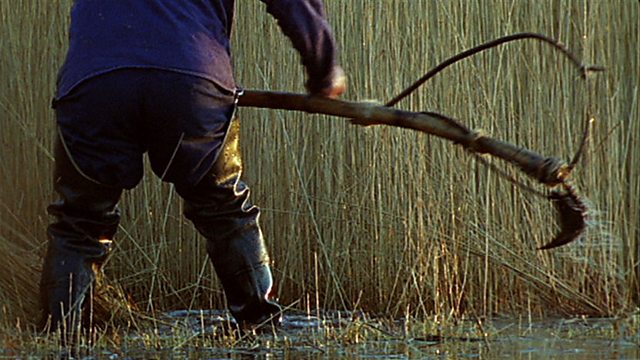
Caring for the country
Human intervention plays a vital role in protecting Britain's best-loved landscapes.
Britain has many places of world-beating beauty – and the 1950s marked a milestone in their protection. It was in 1951 that we began to recognise the importance of our best-loved landscapes, by making them National Parks. The very first of these was the Peak District – and it’s now one of the most visited national parks in the world. From the mountains of Snowdonia to the romance of the Lake District and beyond, these parks are a celebration of our countryside. Who needs to go abroad when you’ve got all this right on your doorstep? But however wild these landscapes look – people play a vital role in looking after them – and perhaps nowhere more so than in the Norfolk Broads. If you like spending time on the water – this is the place to be. There are over 115 miles of navigable channels here and more than 40 lakes. It’s the perfect place for messing about in boats. But if it wasn’t for people, many of these waterways would gradually be taken over by the reeds and sedges – and the broads would begin to dry out. For centuries these fenlands have been harvested for roofing, and the regular cutting has helped keep the plants in check. But since the fifties this has become something of a dying art - so what’s the modern alternative? A giant mowing machine. It might not have the romance of the old fashioned method – but it certainly does the trick! It’s specially designed for the fens, with rubber tracks that don’t sink into the damp earth. With regular cutting, the fens are kept under control, which also helps some of the broadland wildlife. Milk parsley for instance, can’t survive in really dense fenland where it struggles for light. But where the reed has been cut down and grows back slightly less densely then it thrives. And I’m rather pleased about that because it’s the food plant of one of my favourite British creatures. This tiny, weeny little black caterpillar grows up into something altogether more spectacular. The swallowtail… the largest British butterfly and one of the rarest. It only survives in this part of Britain and its future’s dependent on man’s continued intervention in the Broads. Without management all this wetland here would turn into woodland and the swallowtail, along with many other unique fenland species, would simply disappear.
Duration:
This clip is from
Featured in...
![]()
����ý Nature
Be captivated, informed and inspired by the world's wildlife.
More clips from Modern Times
-
![]()
Coastal buffer
Duration: 01:55
-
![]()
Moor repairs
Duration: 02:34
-
![]()
Red squirrel Eden
Duration: 03:03
-
![]()
MOD cons
Duration: 03:51
More clips from British Isles: A Natural History
-
![]()
Gastronomic garden snails—Taming the Wild
Duration: 01:04
-
![]()
Canal plants—Revolution
Duration: 01:17
-
![]()
Japanese knotweed—Our Future
Duration: 03:20
-
![]()
Falcon quarry—Revolution
Duration: 01:44










